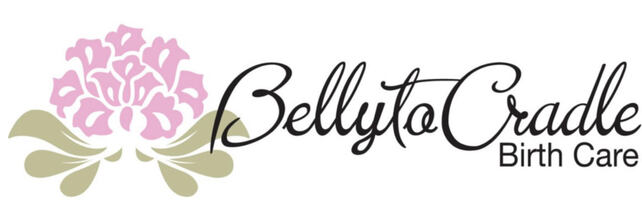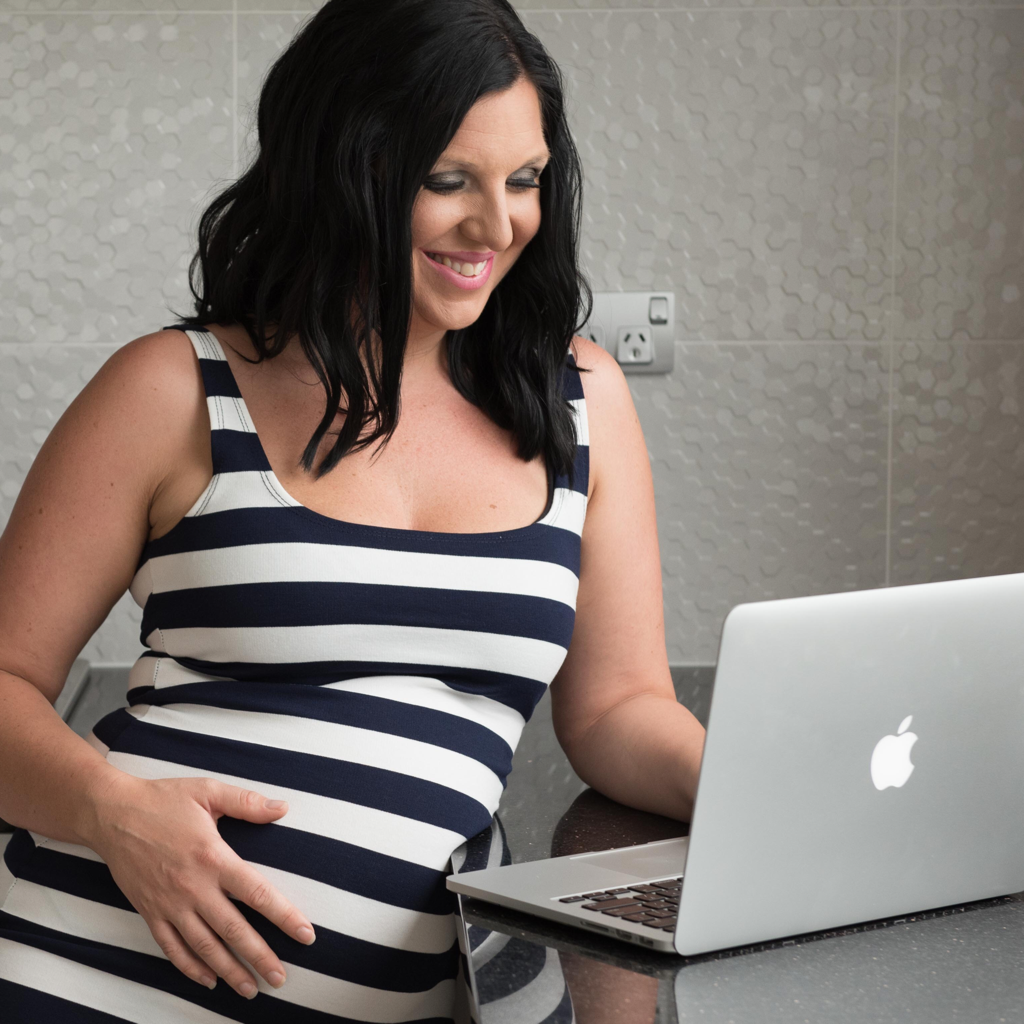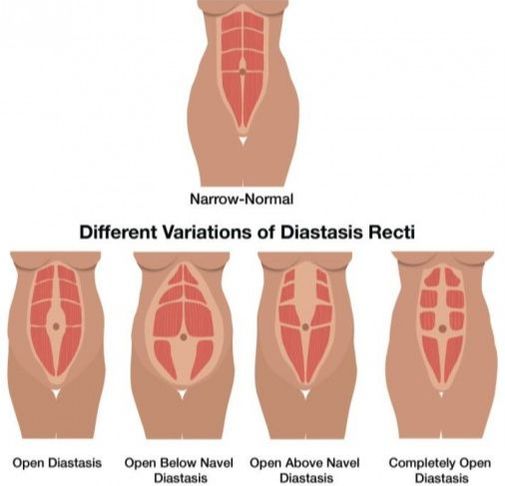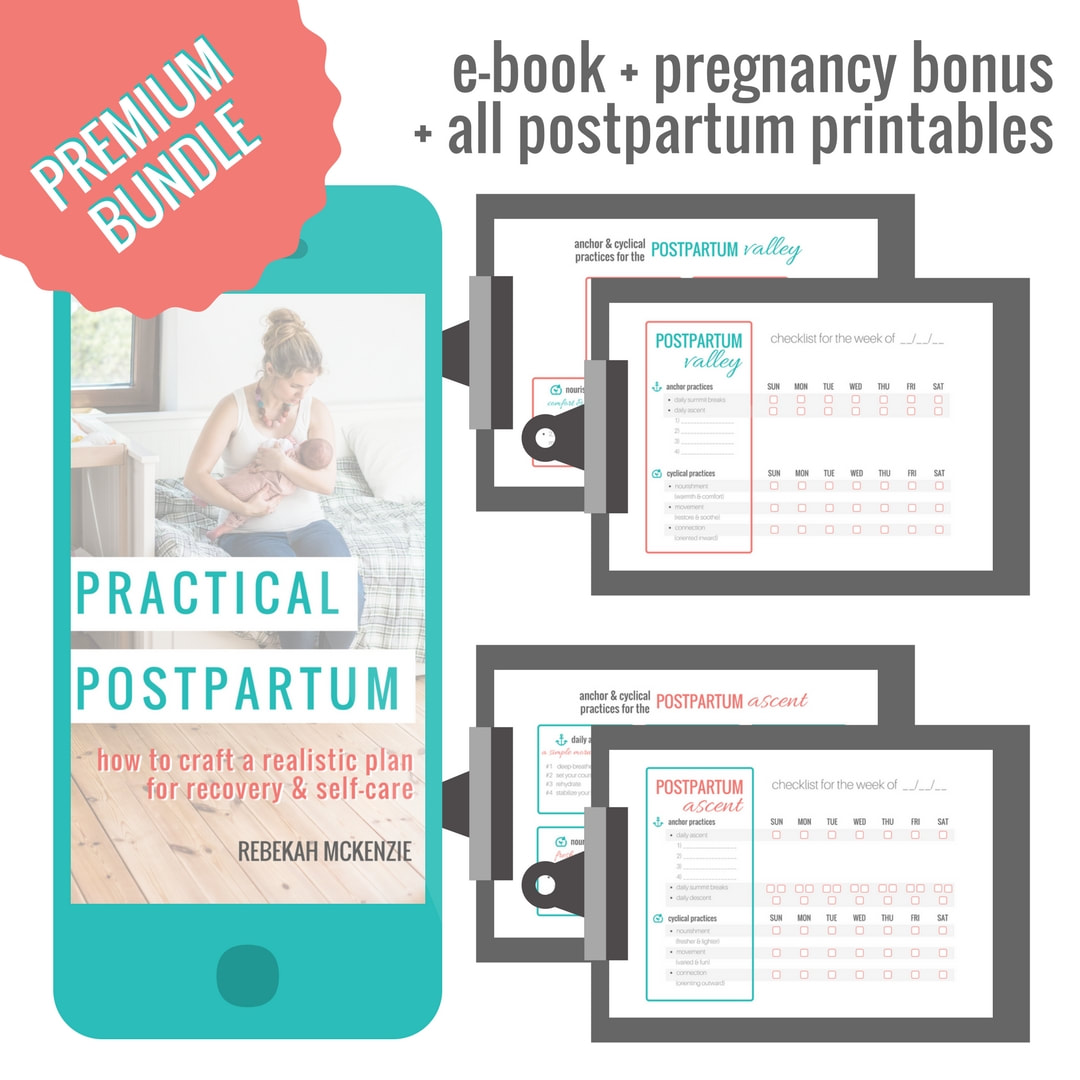|
Just like any other service, you have choices when it comes to who you choose for childbirth education, doula care, lactation support, and placenta encapsulation. And we LOVE that our community has options, especially since historically the Pensacola area has not had as many birth options as other places. This is why we brought BEST Doula Training to town in February--and eleven new doulas entered the community as a result! We get a lot of questions about what makes BTC different--and why we might be the right choice for a family's birth team. Obviously, a personal connection can't be created through a blog post, but we'd like to share a few things that we feel make us different from other options, and knowing those differences might help YOU narrow down which options are right for YOUR birth! "I am beyond pleased with the services that Belly to Cradle provides! From start to finish, I have had such an amazing experience with their team and would recommend them to anyone! -Heather TeamworkWhen you hire one BTC team member--you're automatically hiring an entire TEAM of birth professionals. We take our clients seriously, and cooperate to provide each client with whatever support they need. If you’re taking our childbirth classes, you’ll have access to more than one instructor who are familiar with our area options, but who will provide unbiased information. If you’re a doula client, this means that you are GUARANTEED that one (or more) doulas will be by your side for as long as you need, whenever you need. Our lower priced On-Call doula care option provides you with access to FIVE doulas for the same price some companies charge for one! This dedication to teamwork also means that one of our IBCLCs will touch bases with you and be available to answer questions or schedule a visit with you after your baby is born. As a postpartum client, questions or concerns that go beyond your postpartum care provider's range of knowledge will be fielded by one of the experienced doulas. Utilizing a single service still means you're OUR client. This gives you the option of starting out with one service and expanding to other services later if you discover you love the care you're receiving. "I loved the care I got from all four doulas who had a hand in my delivery...yep, that’s right, four! In case you were wondering what happens when the doula you hired is unavailable during your delivery, trust me, you’ll be covered and very well taken care of!! - Susan TimeIt's no secret that birth services can be pricey--but with BTC you get what you pay for! By setting our prices a little higher than you might pay elsewhere, we are able to sustainably provide undivided attention to fewer clients within a more condensed service area--which means more time and attention for YOU! We have doulas on-call 24/7, 365--the moment you sign your contract we are on call for you immediately. If you were to go into labor at 27, 35, or 42 weeks, we will be there. And there is no time limit for your care once you need labor support. While we may encourage you to labor on your own as long as your are able (to save the good stuff for when you really need it), as soon as you indicate you need your doula's support, she will head to you and stay with you as long as you need her. While some doulas may have a time limit on this continuous support before charging you more, we believe the last thing you need is to have to watch the clock in labor. As a result, your doula might be with you at your birth for 4 hours or 24 hours--your baby will decide that for us! If your labor is unusually long, no worries. Your doula has the ability to bring in a relief doula for a few hours to provide you with fresh support while she recharges, at no additional expense to you. On average, our doulas spend over 24 hours providing the combination of your prenatal, birth and postpartum support. This doesn't include the innumerable on-call hours waiting patiently for your phone call. If you've chosen Essential Doula Care, your doula will make every effort to attend your birth--which includes making sure that her own family and personal obligations are taken care of well in advance so that she can focus on YOU when you need it. This may mean that your doula drops everything, cancels appointments, postpones plans, or doesn't commit to certain things so that she come to you in labor. Your birth becomes our personal priority once you hire us. And rest assured that if something unexpected prevents your doula from attending your birth, that your care will be taken over by someone as amazing as she is! This doesn't just apply to our doulas--our IBCLCs are always available, making last minute appointments because we understand that feeding your baby is one of the most important, and also one of the most overwhelming, things about your postpartum experience. Working as a cohesive team means that every single one of our clients receives timely, continuous, consistent care--whatever it takes to make you feel special and well cared for. "I still text her to this day if I’m nervous or have questions about anything baby related. She has been there for me for far longer than I actually hired her for, and I’m deeply grateful for her big patient heart. If you’re considering hiring a doula, but nervous to invest the money, just know it really becomes priceless with all of the support, knowledge, love & guidance that you get." - Fallon TransparencyTalking about prices--who wants to contact a company just to find out what their prices are?! We love to save prospective clients time, so we aren't afraid of being transparent about our prices so that you can decide right away if we are a good fit from a financial standpoint. And our transparency doesn't end with our pricing. We have always prided ourselves on clarity regarding our philosophy, services, and service abilities. This means that we commit to uncovering your expectations for the services you’ll receive early in the relationship, being clear about what your money is paying for, and what to expect from whichever team member you hire. We also love sharing what’s going on with BTC with the community! What you find on our website and Facebook page is the most up-to-date information possible. RelationshipsYour Birth is one of the most important events of your life—and having long-lasting relationships should be a natural extension of this amazing time in your life. BTC provides you with a ready-made community of trusted care providers and resources in addition to the ACTUAL community we’ve built for all of our clients. This includes our vibrant, active Facebook group and our regular Mom-Tot Playgroup. Whichever team member you work with will also be in touch from time to time to check in and see how you’re doing! The end of your contractual arrangement doesn’t mean your relationship with BTC is over—not by a long shot! " As a first-time mom, their knowledge and support helped me handle my anxiety and get through pregnancy/labor along with the early days of breastfeeding. The mom support group on Facebook has given me resources to figure out this newborn stage and connect with local moms." - Ashley
1 Comment
 Christina, BEST Doula Christina, BEST Doula As Doulas we always talk about what to expect before and during labor. But something we might overlook prenatally is what to expect after your little bundle arrives. So, I asked mothers to weigh in on their postpartum experiences and what no one had told them about. Here are the top things our clients were surprised by in the postpartum! Breastfeeding is HARD Nursing can be painful for some women, especially initially--and it generally is just challenging. Steph says, “I remember calling all of my mom friends and saying, 'Why didn’t you tell me?!'” When establishing a nursing relationship, normal pain may last for the first 30-60 seconds of a nursing session, which could last for up to two weeks, but pain during sessions should not last the entire feeding, and soreness between sessions should improve everyday and not get worse. If pain and soreness persist, contact your local IBCLC--persistent pain can usually be resolved by assessing latch, positioning, and for the potential of tongue and/or lip ties. Hemorrhoids are a pain in the butt “Nobody told me what hemorrhoids could/would be like.” Ashley shared. If you have hemorrhoids while you’re pregnant, there’s a chance they’ll come back to plague you post-delivery. Hemorrhoids are a result of stress on the perineum in the months before, and during delivery. For some, hemorrhoids may simply be itchy and annoying but for others, they can be pretty painful. Here’s a few things to help ease the discomfort:
This is just crampy... So you've birthed your baby and...YOU'RE STILL HAVING CONTRACTIONS?? What is that about? Afterbirth pains are caused by contractions of your uterus as it involutes, or returns to its pre-pregnancy size. They are usually mild for first-time moms but may get more intense with each subsequent delivery. Afterbirth pain will be most intense for the first day or two, but it should start tapering off around the third day or so. Nursing can cause afterbirth pains to intensify because your baby’s sucking triggers the release of oxytocin. The First Poop Pooping after having a baby can be intimidating to say the least. Linda says, "No one warned me about the first poop. For me, it was worse than recovering from a C-section infected with MRSA.” That sounds terrible, Linda! Voiding your bowels for the first time can be REALLY scary, but it should NOT be terrifying or impossible. Staying hydrated before, during, and after delivery of your baby will help make your first “poo” a little easier. Asking your doctor for a stool softener may help to assuage your fears. Don’t forget to stay hydrated after coming home… I speak from experience on that one, otherwise there’s not enough Vaseline and Jesus to help if you don’t! Utilizing a Squatty Potty may also help you assume as natural and relaxed of a position is possible which should reduce the need to bear down. Many moms don't know that it can also be very normal for bowel regularity to take several days to return to normal after birth. Second Night Syndrome More commonly known as cluster feeding, the second or third night after baby is born can make a lot of moms feel inadequate and overwhelmed. “Holy crap that second night in the hospital was probably the toughest in my life to date!" says Kelly. Immediately after your baby is born he/she will most likely be very sleepy, so take advantage of this by limiting visitors and get lots of rest. Charge your iPad so you can binge watch Netflix, have your husband get the snacks you like, act like you're having an awesome slumber party, and just try to enjoy those moments bonding with your baby--sans slumbering. Empty Bed Panic
Being a Mom is hard, and most of the time exhausting. You now have this super-demanding human dictating everything you do, you're sleep deprived, your hormones are all over the place, and now you're starting to feel a little loopy--you can’t even shower without hearing phantom cries! Sometimes, this can result in hallucinations of a sort. Kelley comments, “I feel like I was pretty prepared for what could happen postpartum, but I had never heard anyone talk about getting so incredibly tired you hallucinate.” Know you’re not alone if this happens, as some point many, many moms go through it. A common experience is waking up thinking you’ve fallen asleep with your baby in your bed, ripping the sheets off, frantic because your baby is nowhere to be found, while your partner tries to reassure you the baby is in her own bed, all to no avail. This is empty bed panic--you’re exhausted! Call on your support team for some help. While they watch your baby, you go soak in the tub, then try to get at least three hours of sleep in a row. I bet you’ll wake feeling more like the woman you remember. Milk Happens Planning to nurse? Well, there may be milk EVERYWHERE. "No one told me I might wake up SOAKED in breastmilk!" Fallon says. Another client adds, "Oh, and the milk fountains during intercourse!" Yes, and yes, these might happen, but it’s not as bad or gross as it might sound! Putting a large, soft towel under you while you sleep, or before, ahem, shenanigans, will help make clean up easy. And if it happens during sex, oh well--your partner watched as you carried, birthed and nurtured their baby! Their love for you is beyond anything you could ever imagine. I bet they'll just be glad to finally be able to have sex again. If you’re really worried about it, just wear a bra with your Milkies or breastpads in--easy peasy. Not everything about postpartum is horrible, or painful, or scary. Quite the contrary, postpartum is fun, free, and intoxicating. You literally forget yourself for the longest time because your love for another human literally takes over. Life will forever be different and intriguing, what will they do next? What great milestone will they reach that makes as love them even more? Oh, the love a Mom has for her child! It surpasses all the love you could have ever known or felt and literally erases all the “big, bad, and ugly” parts of postpartum. Relax Mom, you’ve got this! Much Love, Christina  Candace Rorrer, Certified Exercise Physiologist, BS in Exercise Science Candace Rorrer, Certified Exercise Physiologist, BS in Exercise Science With all the changes that take place during pregnancy there are also things you experience after pregnancy that you didn't have before being pregnant. You find your body doesn't feel the same as before. Even after losing weight, your stomach may feel very loose and you may feel like you have a pooch you just can't seem to get rid of. You may even experience low back pain and have pelvic floor issues, like leakage when you jump, cough, sneeze, or laugh. I have heard time and time again from clients that ask their doctors about their stomach and they are told that the only thing that will help is having a tummy tuck or there just is no fixing it. I am here to tell you that is absolutely WRONG! The symptoms I mentioned above are all signs that you might have Diastasis Recti. This is a separation of the abdominal wall. Some women have no trouble and the abdominal wall goes back together with no problem and others like myself still have some separation or complete separation afterward. This is when continuing a regular workout should be done with caution (no crunches or planks) and you should find a corrective exercise specialist to rehab your diastasis recti back together. What is Diastasis Recti? The word diastasis means separation. The recti muscles are the outermost abdominal muscles. So, it is a separation of the outermost abdominal muscles. When the muscles separate the connective tissue (linea alba) joining these muscle stretches sideways. The job of these muscles (called rectus abdominis), is to support your back and your organs. So why should you care if your muscles are separated? Because separated muscles are weak muscles. Separated muscles cannot do their job of supporting your back and organs. To achieve a strong core, your muscles must be close together. The sideways stretching of the connective tissue causes it to become thinner and weaker. So, what happens is this weak saran wrap-like connective tissue is NOT effectively supporting your belly button, back and organs. They are only supported when the muscles are close together. "100% of women have some level of diastasis of the rectus abdominis in the third trimester.(Gilliard and Brown 1996, Diane Lee 2013.) Importantly, for many women the gap remains widened at 8 weeks, and left untreated, this distance at 8 weeks remains unchanged at 1 year postpartum. (Coldron et al 2008, Liaw et al 2011.) 66% of women with diastasis recti have some level of pelvic floor dysfunction (Spitznagle et al 2007). Diastasis recti and pelvic floor problems tend to go together." MuTuSystem How to test for Diastasis Recti
This simple self-test will help you determine if you have diastasis recti.
Exercises to Avoid Crunches, planks, bicycles, sit ups, abdominal machines, ball crunches, etc. This is not a comprehensive list, but similar exercises should be avoid. You don't want to put more strain on these muscles that are already very weak. Those types of core exercises are only going to cause more separation instead of strengthening them. Exercises for Diastasis Recti Exercises that will help heal the diastasis recti are pelvic tilts lying on the floor with knees bent, heel slides starting with one leg at a time and making sure that your back remains with a natural arch, exercises that engage the transverse abdominals. I am excited to announce that I will be a PostPartum Corrective Exercise Specialist in just a few months and will be able to help other with diastasis recti, leakage, prolapse, and pelvic floor issues. Contact me through my website, www.essentiallyfitpcola.com! Have you experienced the “mombie” (mom+zombie) state yet? You’re so tired from lack of sleep that you feel only barely alive and functional, easily confused and unable to focus. You feel like all you do is feed the baby in the same spit-up stained t-shirt and yoga pants you've worn for two days--or is it three now? You can't find your phone and you can't remember when you actually ate a full meal, had more than three hours of consecutive sleep, or took a shower. Why is it that motherhood is synonymous with sleep loss? There are actually two sets of circumstances surrounding the beginning of motherhood that seem to set the stage for being so dang tired: late pregnancy and early postpartum. At the end of pregnancy, several factors culminate in prenatal insomnia. You may find it difficult to get comfortable during the night. When and if you do get comfortable enough to sleep, you may be disturbed by leg cramps, heartburn, baby kicks, or an increased need to urinate. Additionally, you may find that once you’re settling in and powering down to sleep, your mind kicks into gear with all the nesting tasks you have left to complete and maybe even anxieties surrounding giving birth or those newborn weeks. Just after the birth of your baby, another set of circumstances emerges to cause the sleep deprivation for which early postpartum is so infamous. The most obvious factor is your baby waking you up, needing to feed or have a diaper change. This is partly due to your baby’s tiny stomach capacity and innate need to feed often, but it’s also due to the fact that your baby’s circadian rhythm (the sleep-wake cycle) hasn’t yet calibrated to match that of the other earthlings in your household. Baby is still used to being awake at random times in the darkness of your womb and isn’t accustomed to, or even capable of, sleeping for long stretches of time in the dark hours. And if you’re worried about baby’s health and safety, that can also contribute to poor sleep quality. So, what can we do? While knowing the causes of sleep loss can be helpful, let’s bridge the gap and cover some helpful tools. Some of these tools are in the category of prevention: keeping the causes of sleep loss at bay (or from occurring at all). Others are in the category of coping: acknowledging that “it is what it is” and taking some action to mitigate the effect of sleep loss. Preventing and Coping with Sleep Loss:
All over the world, moms are celebrating World Breastfeeding Week, some even honoring the event with traditions like the Global Big Latch On in some communities (come see us at the Global Big Latch on of Escambia & Santa Rosa Counties). In honor of this week, we are keeping it real. It seems like the minute you announce your pregnancy, the advice starts to pour in from all directions--not just for pregnancy and birth, but for breastfeeding too. From "Don't eat broccoli or asparagus, it will give the baby gas," to "Never wake a sleeping baby to eat!" we are sure you've heard all the strange (and not-so-great) suggestions there are out there. And while there are some strange pieces of advice that are also mythical, there are also some strange pieces of advice that can be very, VERY helpful and real. #1: Give the ladies air time. Yes, we are suggesting you go topless once in a while. Letting your twins free while you're breastfeeding can be a very important part of the process--not only because your nipples are not accustomed to friction for 8 hours a day at first, and fabric against them can feel like rubbing shards of glass on them as they heal from any initial damage, but also because wearing a bra or shirt 24/7 can promote bacterial and fungal growth. Yeast and other bacteria thrives in dark, moist, warm places (aka, your nursing bra), and your breastmilk contains carbohydrates/glucose, which also feeds bacteria and fungi. So by going topless, you are not only giving your nipples time to heal and be more comfortable, but you are also allowing them to stay dry so that you can help avoid a thrush outbreak or other bacterial infection in your milk ducts. Wearing a button up shirt or a robe can facilitate this--hey, you could even just cut some holes in an old t-shirt and be set! Just make sure that you don't forget about your state of dress (or lack thereof) and accidentally answer the door for the UPS man. #2: Strange breastfeeding positions are sometimes the best. One of the most common issues in the early days of breastfeeding, and then later on during changes that can impact supply, are plugged ducts. This is when fat globules in your milk collect in one part of a duct and form a clog in the flow of milk. Many moms feel this as a hard knot that could be anywhere from the size of a marble to a golf ball. When this happens, one of the best ways to work the knot out is to lay your baby flat, and "dangle" your breast over your baby to feed, with the baby's chin against the knot. This allows gravity and the baby's oral movement to work the knot out. (See this position here). Another fantastic breastfeeding position to help clear plugged ducts (or prevent them if you have them happen more than once) is the "over the shoulder" position. Imagine throwing your baby over your shoulder, upside-down, and you've about got the image! In this position, you are laying down on your side or back, and baby is lying with legs literally over your shoulder. (See this position here). These positions aren't just for plugged ducts, though. Switching the position baby feeds in frequently stimulates different parts of the breast, which can increase supply AND help prevent baby from developing a preferred nursing position or side. So, if you've struggled with plugged ducts more than once, or are uncomfortably engorged in the early days, this can be an especially helpful position if you have a very little one. #3: Other Ways to Remove Plugged Ducts. Plugged ducts can be nasty little boogers that are both painful and a precursor to mastitis (an even nastier booger). Thus, our desire to help you remove them as easily as possible, and avoid them in the future. And there is more than one way to fix this problem. The key with removing the clogged ducts is to dissolve the plug of milk fat--and this can require massage, heat or vibration. So, our favorite tools to suggest for plugged duct removal are:
#4: Put that stuff on everything.
This hearkens memories of My Big Fat Greek Wedding where the father of the bride believed that any ailment could be cured by Windex. Well, just switch out Windex for breastmilk and we've got a similar situation going on here. From pink eye, to scratches and cuts, to ear infections, lots of moms are now treating common ailments with a drop or two of anti-body filled breastmilk. In fact, many moms are stashing extra breastmilk in tiny syringes in the freezer just for situations like this. It might sound crazy, but there's lots of evidence that it works!! So, in celebration of World Breastfeeding Week, maybe stash away these "crazy" suggestions for later use--you might need them. And we'd love to hear about any weird or strange breastfeeding suggestions you've been given that have worked for you! |
This is us.We are Women. We are Moms. We are here to help your family blossom. Archives
September 2019
Search
All
|
Building 4
Pensacola, Florida, 32504
We proudly provide
Childbirth Education, Placenta Encapsulation, Lactation Consultations & Doulas
in Pensacola, Milton, Pace, Gulf Breeze, Navarre, Crestview, Ft. Walton, Florida.
Copyright 2017, Belly to Cradle, LLC.
Photo Credits: Kayla Reeder Photography, Lynette Sanders Motherhood Photography,
Savanna Morgret Photography, Finding Beauty in the Ordinary Photography,
& New Light Birth Photography
|
|























